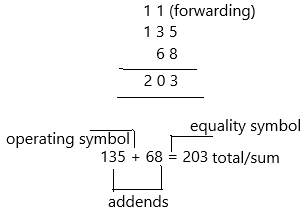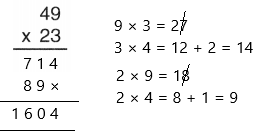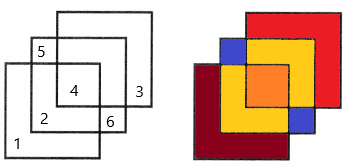By accessing our 180 Days of Math for Fifth Grade Answers Key Day 163 regularly, students can get better problem-solving skills.
180 Days of Math for Fifth Grade Answers Key Day 163
Directions: Solve each problem.
Question 1.
135 + 68 = ___________
Answer:
The addition is the term used to describe adding two or more numbers together. The addition is denoted using the plus sign ‘+‘ such as the addition of 3 and 3 can be written as 4 + 4. Also, the plus sign (+) can be used as many times as required, such as
4 + 4 + 4 + 4.

Therefore, the answer is 203.
Question 2.

Answer:
In mathematics, multiplication is a method of finding the product of two or more numbers. It is one of the basic arithmetic operations, that we use in everyday life. The major application we can see in multiplication tables.
In arithmetic, the multiplication of two numbers represents the repeated addition of one number with respect to another. These numbers can be whole numbers, natural numbers, integers, fractions, etc. If m is multiplied by n, then it means either m is added to itself ‘n’ a number of times or vice versa.
The formula for multiplication:
The multiplication formula is given by:
Multiplier × Multiplicand = Product
– The multiplicand is the total number of objects in each group
– A multiplier is the number of equal groups
– Product is the result of multiplication of multiplier and multiplicand

Therefore, the answer is 1604.
Question 3.
361 ÷ 24 = ___________
Answer:
The meaning of divide is to separate into two or more equal parts, areas, classes, categories, groups or divisions. In simple words, the meaning of divide is to distribute the whole thing to a group in equal parts or make equal parts. The result of a division operation may or may not be an integer. Sometimes, the result will be in the form of decimal numbers.
Divide symbol:
The symbol used to represent divide or division is ÷, slash (/) or a horizontal line ( _ ). These symbols are used per convenience while dealing with various types of problems and calculations. Also, x/y or ![]()
Division formula: The four important terms used in the division operation are dividend, divisor, quotient and remainder. The formula to calculate the division of two numbers is:
Dividend ÷ Divisor = Quotient + Remainder.
Here,
The dividend is the number, which is being divided
The divisor is the number, which divides the number (dividend) into equal parts
The quotient is the result of the division operation
The remainder is the leftover number in the division operation.

Therefore, the quotient is 15; the remainder is 1.
Question 4.
Arrange the numbers in ascending order.
3,657; 3,756; 3,567
Answer:
Ascending order is a method of arranging numbers from smallest value to largest value. The order goes from left to right. Ascending order is also sometimes named increasing order. For example, a set of natural numbers are in ascending order, such as 1 < 2 < 3 < 4 < 5 < 6 < 7 < 8… and so on. The less than symbol (<), is used to denote the increasing order.
The above-given values are:
3657; 3756; 3567
The ascending order is 3567; 3657; 3756.
Question 5.
Simplify \(\frac{8}{10}\).
Answer:
\(\frac{8}{10}\) can be written as 8/10
8/10 = 4/5
Reduce fractions to lowest terms.
1 is the greatest common divisor of 4 and 5.
Question 6.
17 • 9 – 8 • 3 = _________
Answer:
The value of 17 • 9 is 153
The value of 8 • 3 is 24
Now subtract both the values we got. Assume the answer is X.
X = 153 – 24
X = 129.
therefore, the value of an above expression is 129.
Question 7.
25 ×  = 175
= 175
Answer:
Let the empty box be X
25 × X = 175
Take 25 to the right-hand side then the expression becomes:
X = 175/25
X = 3
Now we got X value. Keep this X value in the above expression.
25 × X = 175
25 × 3 = 175
175 = 175
Hence, the answer is verified.
Question 8.
_____ mL = 4.5 L
Answer: 4500 millilitres
a litre has been defined as being equivalent to 1,000 millilitres
1,000 milliliters is equivalent to 1 L.
1 litre multiplied by 2 would become 2 litres, and
1000 millilitres multiplied by 2 would become 2000 millilitres.
for 1 litre, 1000 millilitres
Likewise 4.5 litres × 1000 ml = 4500 millilitres.
Question 9.
How many vertices are on a cube?
Answer: 8 vertices.
Cubes are solid three-dimensional figures that have 6 faces, 12 edges, and 8 vertices. The faces of the cubes are square and meet four other faces at right angles. The cube is the only regular hexahedron, that is, with six equal faces.

Question 10.
What is the outlier in this data set?
422; 992; 1,124; 924; 1,042
Answer: There is no outlier.
The step-by-step calculation for outliers:
First, we have to arrange it in ascending order.
422, 924, 992, 1042, 1124.
N = 5 (odd)
An outlier in distribution is a number that is more than 1.5 times the length of the box away from either the lower or upper quartiles. Specifically, if a number is less than Q1 – 1.5×IQR or greater than Q3 + 1.5×IQR, then it is an outlier.
– The first quartile, also called the lower quartile, is equal to the data at the 25th percentile of the data. The third quartile also called the upper quartile, is equal to the data at the 75th percentile of the data.
Median(Q2) = 992
If the N value is odd then no need to take the median.
Q1 = 422+924/2
Q1 = 1346/2
Q1 = 673
Q3 = 1042+1124/2
Q3 = 2166/2
Q3 = 1083
Interquartile range: the interquartile range (IQR) is a measure of statistical dispersion, being equal to the difference between the third quartile (Q3) and first quartile (Q1), that is, IQR = Q3 – Q1.
IQR = 1083 – 673
IQR = 410
Now check the outliers:
Q1 – 1.5 * IQR
673 – 1.5 * 410 = 58
Q3 + 1.5 * 410
1083 + 1.5 * 410=1698
Now once observe the data set and see if there are any values less than 58 and greater than 1698
422, 924, 992, 1042, 1124.
There are no values so there are no outliers.
Question 11.
The numbers 1 through 10 are written on individual cards and placed in a bag. If you reach into the bag and grab one card, what is the probability that it will be a number formed only with straight lines?
Answer:
This formula is the number of favourable outcomes to the total number of all the possible outcomes that we have already decided in the Sample Space.
The probability of an Event = (Number of favourable outcomes) / (Total number of possible outcomes)
P(A) = n(E) / n(S)
P(A) < 1
Here, P(A) means finding the probability of an event A, n(E) means the number of favourable outcomes of an event and n(S) means the set of all possible outcomes of an event.
The numbers are 1, 2, 3, 4, 5, 6, 7, 8, 9, 10
The numbers with straight lines: 1, 4, 7
The favourable outcomes are 3
the total outcomes are 10
P(straight lines) = 3/10=0.3
Therefore, the probability is 0.3
Question 12.
How many squares of any size are there in the image?

Answer:
There are 6 squares.

There are three 3 x 3 squares, one 1 x 1 square and the remaining two are corner squares.